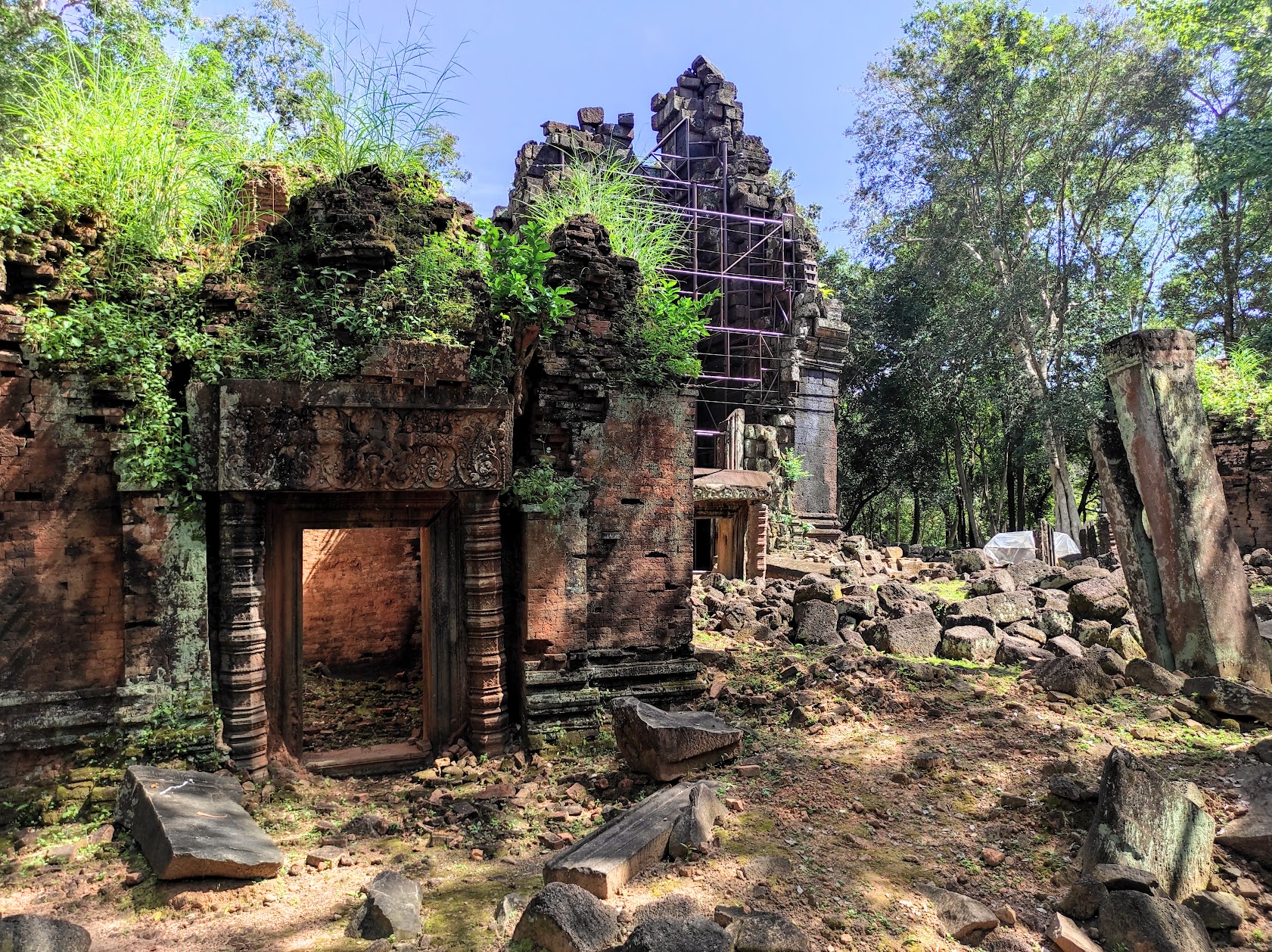- Area: Preah Vihear Province > Kuleaen District > Srayang Commune > Koh Ker Village
- | Type: Ancient Remains & Temples
Prasat Banteay Pir Choan is one of the must-see temples at Koh Ker. The site featured an outer laterite enclosure wall with entrance gopura (gate) on the east and west inside of which was another enclosure wall that surrounded the shrines being a single grand shrine surrounded by eight smaller shrines. The layout of the site once again emphasizes the Koh Ker group’s fascinating diversity in temple layouts. The site is dated to 937 AD under the reign of King Jayavarman IV and is dedicated to Brahma Prajapatishvara.
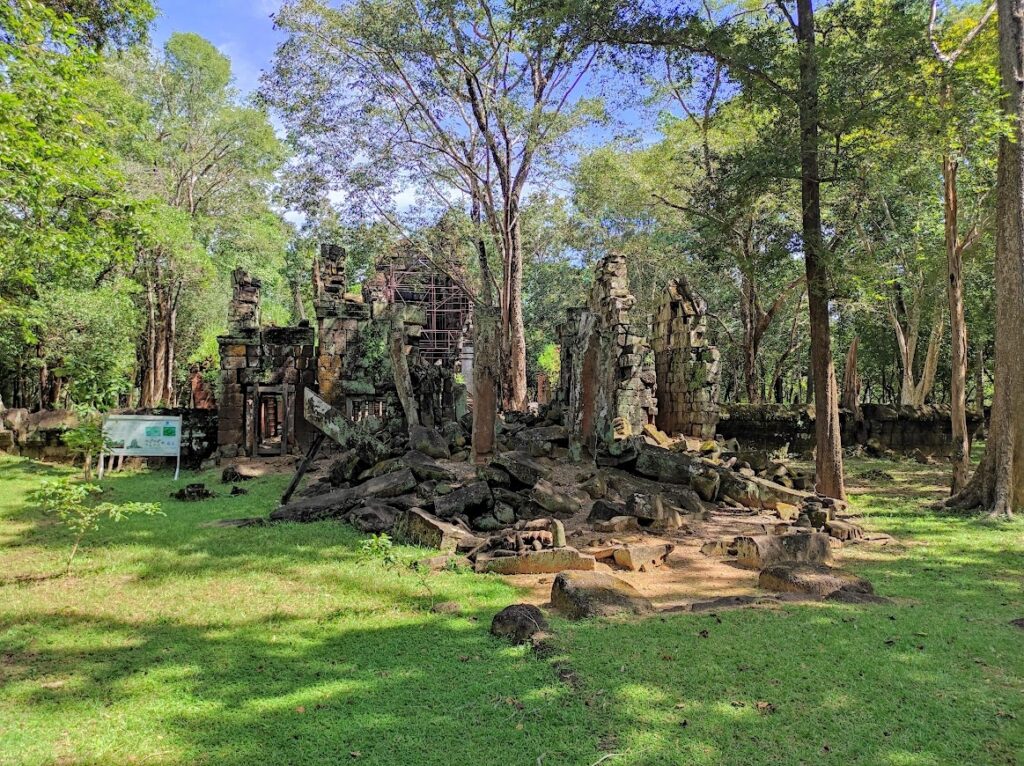

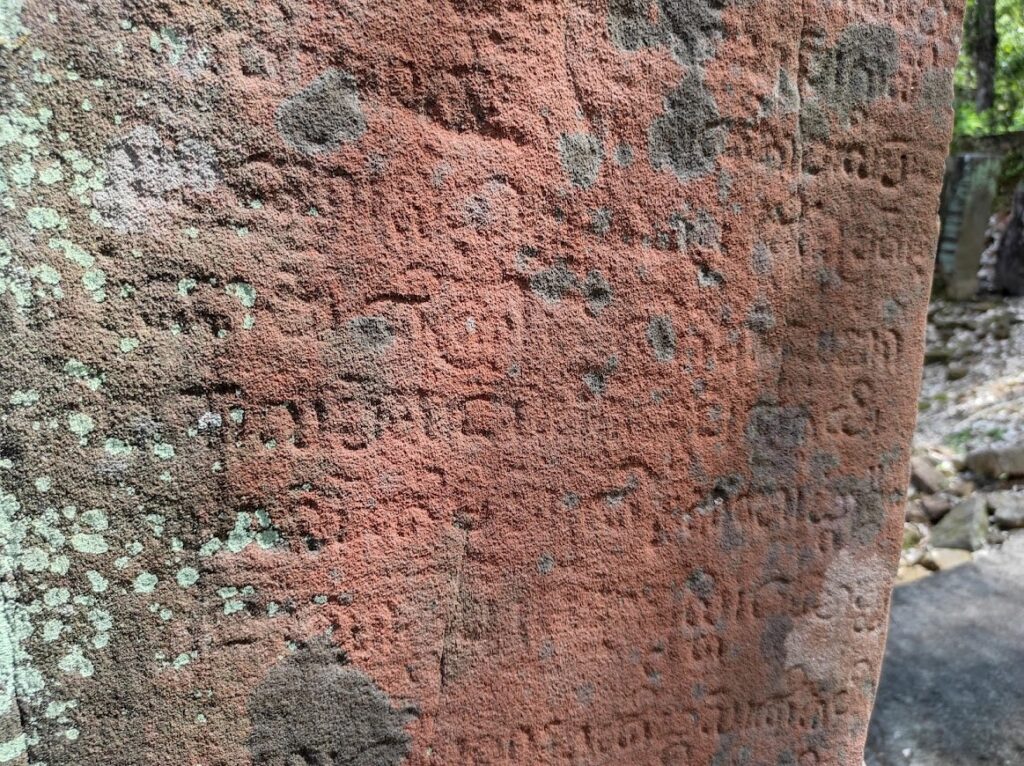
The central tower is constructed of laterite and surrounded by smaller brick temples, some of which are still partially standing. One features a beautiful lintel that’s still in place. Note the pillars of the gopura as you walk through as they feature quite long inscriptions.


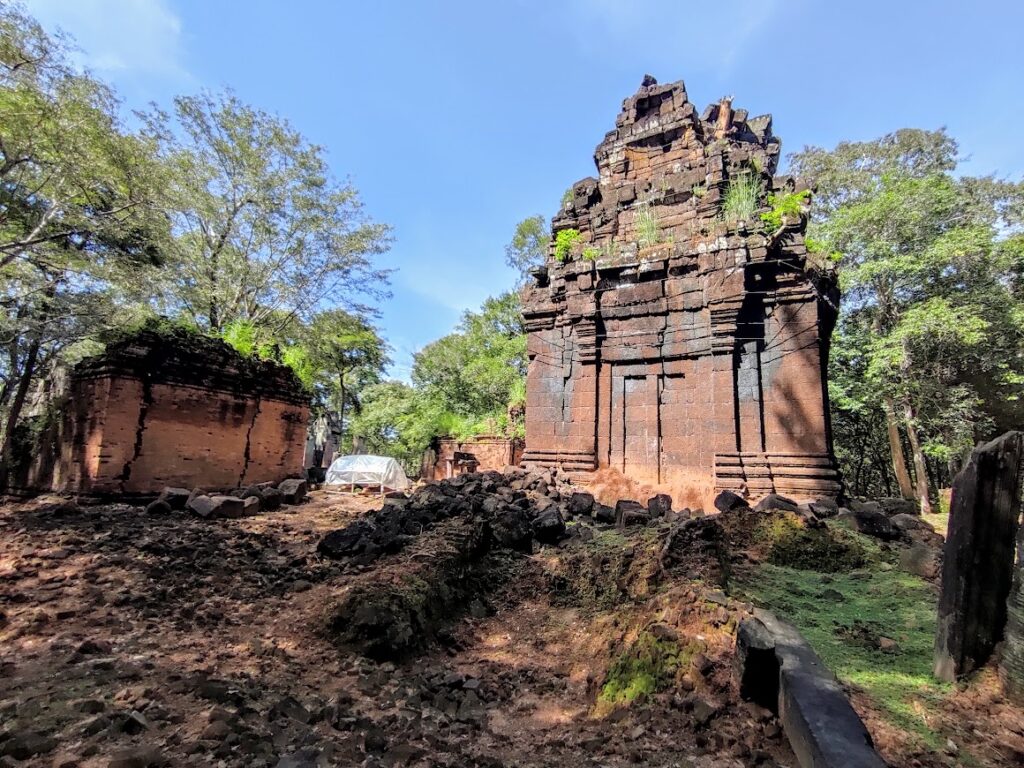

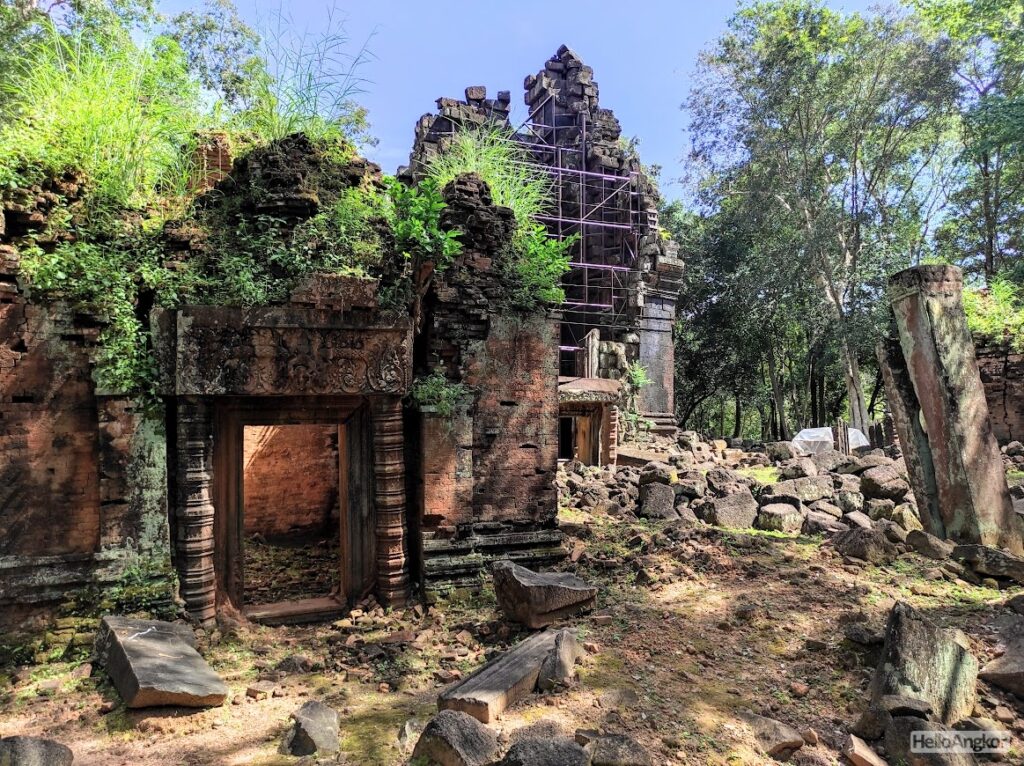

Inside the central tower is a spectacular and unique but quite ruined pedestal. Unusually, it is round and features extremely ornate decoration including depictions of the sacred bird Hamsa. Round pedestals are typically associated with Brahma in the Khmer universe and so it is here. According to Prof. Divay Gupta in a recent publication, Banteay Pir Choan sits within a specific formation together with Prasat Thom and Prasat Chen realizing the Hindu trinity of Shiva, Vishnu, and Brahma.


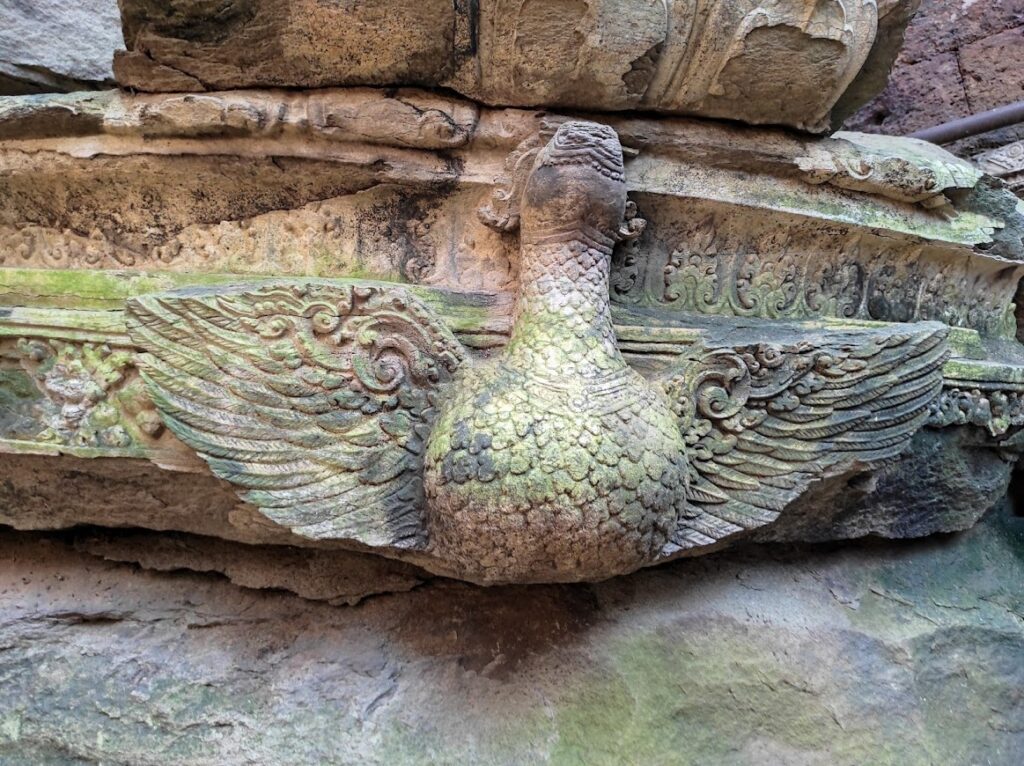
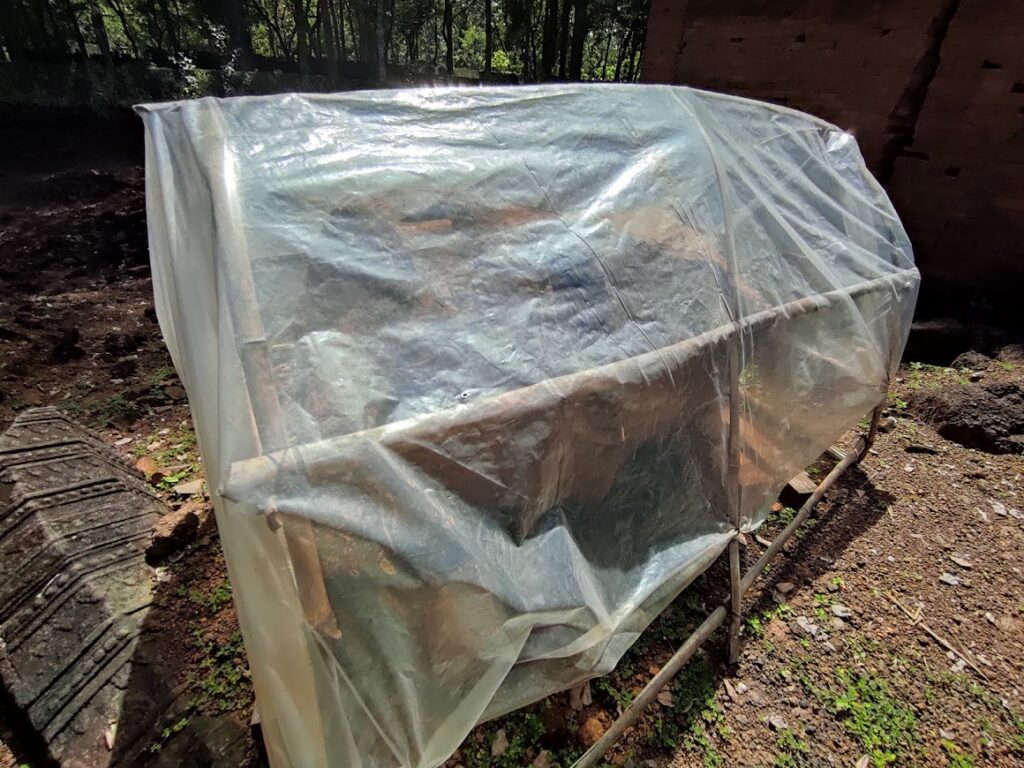

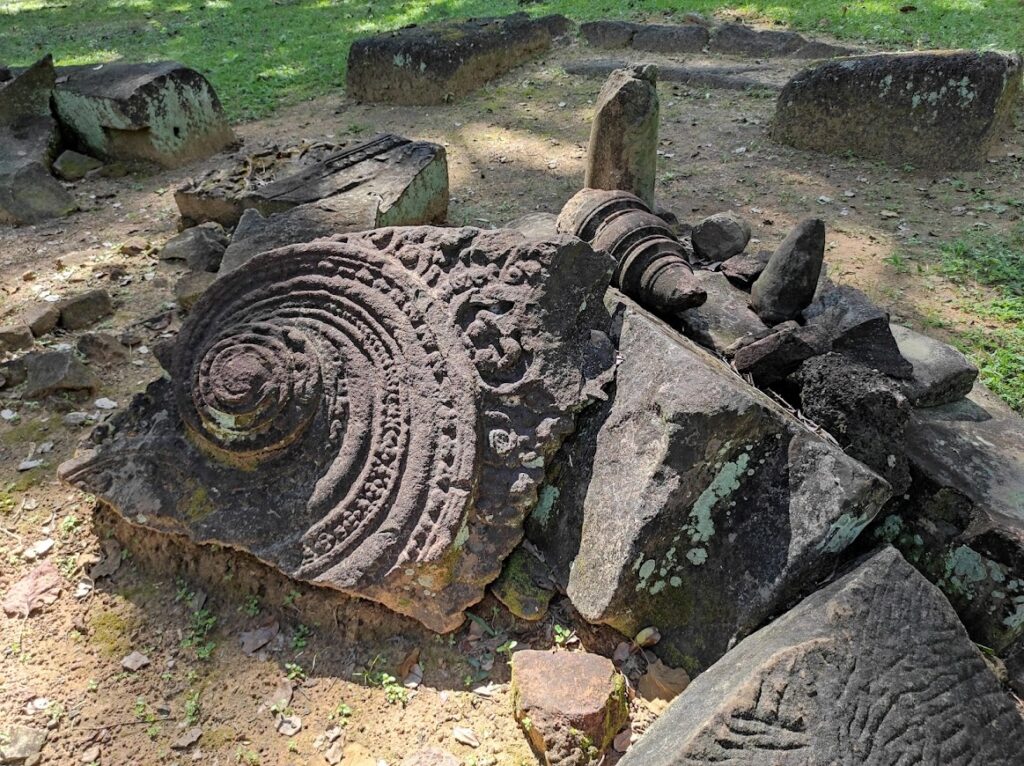
Historical Images

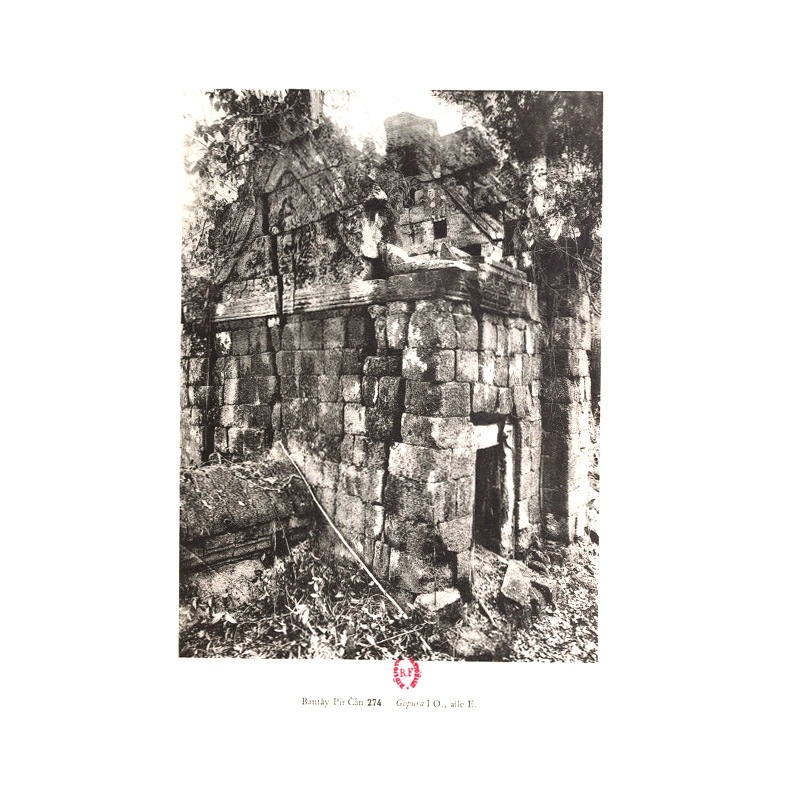
Historical Notes
Pr. Bantay Pir Can has the double enclosure is in the I.K. under by the name of Pr. Dong Kuk, which in reality applies to I.K 277. It is 200 m. about the S.-E. of the Rahal towards which it is turned to the West and from which it suffers the misalignment.
It is a group of 9 sanctuaries, the central one, enormous, in laterite, the others more modest in brick, at the angles of a regular octagon. and turned towards the periphery. Two libraries placed forward to the West accompany them, and the whole is enclosed in a double enclosure that of the interior is provided with a gopura to the West; that of the exterior is interrupted to the west and east, and that of the interior to the east by an empty space which undoubtedly corresponds to a light gopura which has disappeared.
The central sanctuary is a considerable prasat in laterite, of the ordinary plan, but with recesses and slightly projecting false doors. The tower is gutted from top to bottom on the main face and the interior is almost filled with rubble; it must have had its ground quite steeply below, for their heaping does not rise at a great height. The walls show a beautiful cove cornice and a succession of corbels and drums in laterite courses. The frame of the door O. has very wide uprights in depth; the true lintel which is miter-jointed to it, about the fifth, did not reach as far as the interior wall.
Outside, the tower raises its powerful bare walls between a high base common to all its elements and a cornice, both of the type with double windows.
The base rests on a sideboard fitted with steps on the axes (S side) which in turn must have received a buried base. Of the door O., I only remains the frame, with an ordinary profile, simplified and powerful, with the enormous, octagonal colommette S, in the ordinary composition of the group, that is to say with five elements with large cut nudes with a beaded band. The lintel is invisible. The false doors, immense, have great allure in their simplicity; the small columns are reduced to simple rectangular strips, barely more prominent than the frame and the leaves. The cornice of the pilaster has the height of the decorative lintel; made of bricks, it is bare; the whole bears an inverted U-shaped pediment stretched in width with the step and the movement of ordinary protruding leaves; the curved tympanum is plunging. The cornice of the tower carries a credenza and slightly reduced floors in plan which repeat the lower layouts.
In spite of the narrowness of the free space, their angles carry dampings of laterite in prását; one fell to the ground at the S.-E. of the main body. Three others are still staged on the North-West angle.
Of the eight framing towers, almost nothing remains of those of the W. corners of the N. face and the N. of the E. face; the north tower of the west face has kept only its small columns and the monolithic uprights with those of the west door. The E. tower of the N face has its door almost complete. The S. tower on the E. side has kept part of its walls, but has lost its East door. The E. tower of the S. face only has its southern frame. The W. tower on the S. side still has its E. wall; its door swings forward. Finally, the S. tower of the W. face has its W. door complete with its two lintels, but that is all that remains of it.
If we combine the information provided by the eight buildings in their different states of ruin, we can describe them as square towers, with bare walls, with finely detailed profiles in the brick, with a door with a decorative composition; we know neither the interior, nor the floors, nor the type of the pediment above the door. For the rest of the bay, the shapes repeat in smaller form those of the other doors of this whole set.
The libraries, in spite of the general change of orientation, continue to preserve that which is special to them; they have a false door to the east and a porch with two successive doors to the west. They are, as usual, rectangular buildings with one floor. The southern one is the least ruined. Its west door has a curious lintel with a central deity with the head of a horse jostling two spirit.
The I West gopura is a cross-shaped room with eight windows with five bamboo balusters, one in each spandrel, and opposite doors of decorative composition on the E.-W. axis; they are sheltered by porticos with two spans of the usual type, that is to say with eight pillars, two of which are close to the back wall. At the end of the N. and S arms, and without communication with them, are two wings; they are pierced to the west and east with single-framed doors, brought closer to the extreme walls, and forming side passages. The triangular gables with curved sides and final butts carried the purlins of tiled roofs; the cornices have ends of false tiles. If remains part of the S. gable in place with its W. butt, and the N. gable is fairly well preserved. Several crooked butts are lying on the ground.
The enclosures have laterite walls capped in the shape of a roof with curved sides. In front of wall II, a few pediment ‘ears’ fallen on the ground indicate the old decoration of the wall. The outer enclosure is a square of 105 m.
The pillars bear inscriptions but so erased that stamping L is very difficult; they are at the E. or interior portico of the W. entrance gopura. The detail is unnecessary here. The temple appears to have been consecrated to Prajapatiçvara, that is to say, doubtless to Brahma.
With the Bantay Pir Can 274, we saw the last monument that undergoes the special orientation of the Rahal. We are going to follow to the south the supposed road which leads to the region where the splendid monument of Ben Mälä 214 will later rise, examining the series of temples which, except for one, the first, Pr. Camreh, are almost all facing in reverse of the ordinary orientation
L’Art khmèr classique , monuments du quadrant Nord-Est, par Henri Parmentier, 1939
Inscriptions
- K. 678 – 61 lines of Khmer – Chhom 2011, p. 275-282 ; Jacques 2014, p.259
- K. 679 – 60 lines of Khmer – Chhom 2011, p. 283-290 ; Jacques 2014, p. 262
- K. 680 – 60 lines of Khmer – Jacques 2014, p. 273
- K. 681 – 60 lines of Khmer – IC I, p. 55 ; Chhom 2011, p. 291-297 ; Jacques 2014, p. 247
Map
Site Info
- Site Name: Banteay Pir Choan (Pr.) Khmer Name: បា្រសាទបន្ទាយពីរជាន់
- Reference ID: HA11557 | Posted: January 18, 2021 | Last Update: July 30th, 2023
- Tags/Group: Koh Ker, pr, rb, Temples
- Location: Preah Vihear Province > Kuleaen District > Srayang Commune > Koh Ker Village
- MoCFA ID: 268
- IK Number: 274
- Inscription Number/s: K. 678, 679, 680, 681

